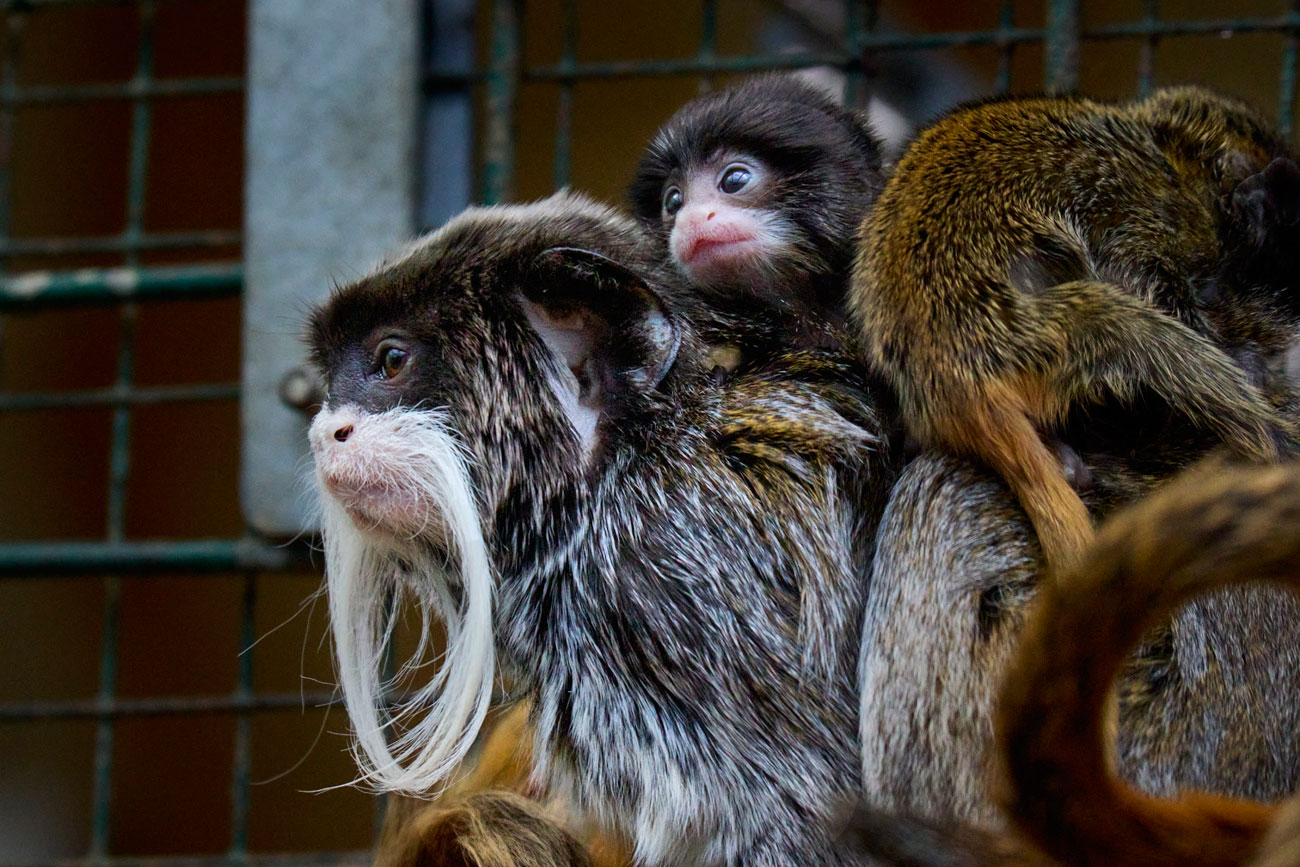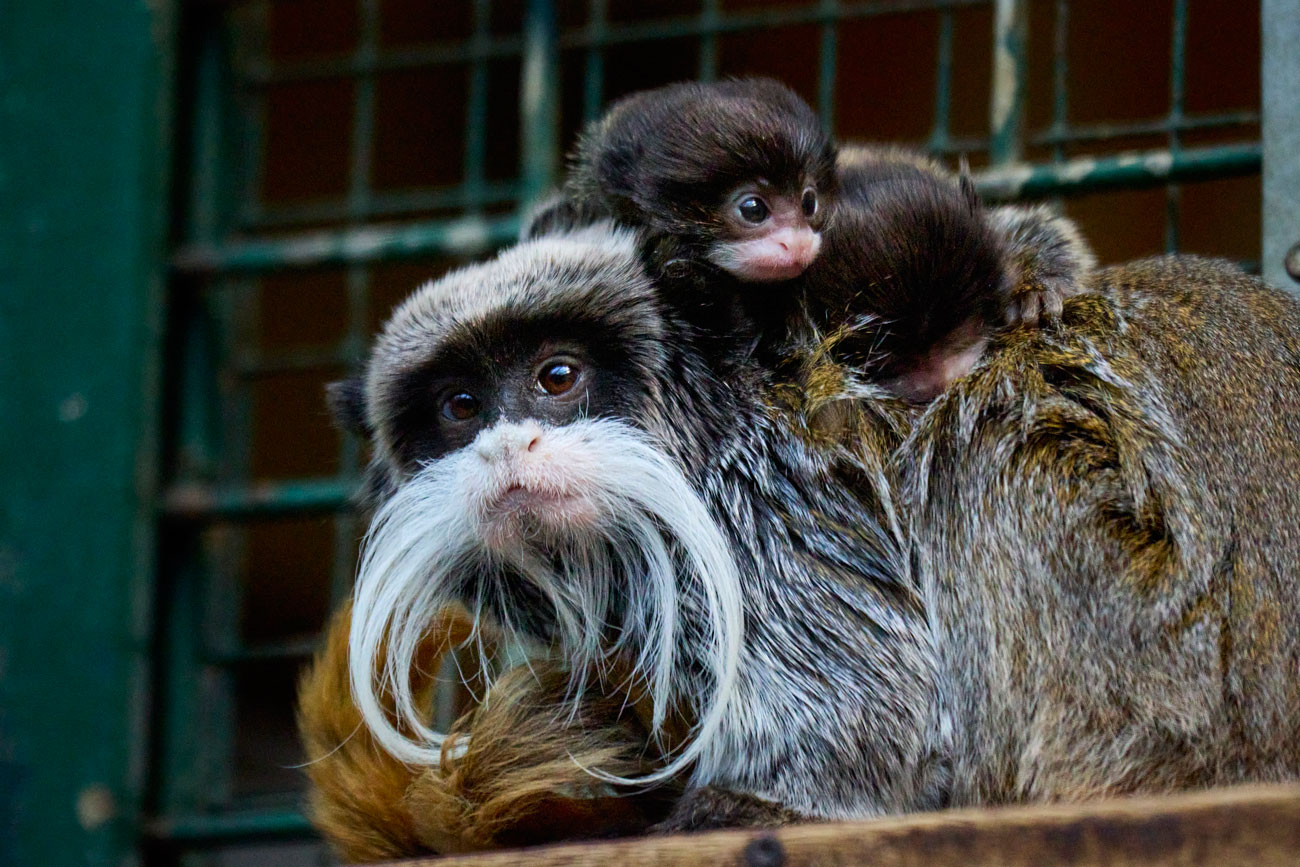Birth of Bearded Emperor tamarin twins

Our newly-established pair of Emperor tamarins (Saguinus imperator subgrisescens) has just given birth to twins. Despite their inexperience in breeding and a slight stress during the first 24-hours (these are their very first newborns!), the 8-year-old male born at Plzen Zoo in the Czech Republic and the 3-year-old female born at Dresden Zoo in Germany quickly took turns taking care of the tiny little ones.
Indeed, in Emperor tamarins as in other species of marmosets and tamarins, infant care is cooperative meaning that all the group members participate in raising the babies. They are first carried alternatively by the male and the other members of the family while the female takes them back for suckling, then they are fed at weaning and during the juvenile stage by the whole group. This system helps the lactating female (who is quite often already pregnant) to limit the amount of energy required to raise her babies since at birth, young marmosets and tamarins usually weigh between 15 and 25% of an adult weight! Young adults from previous litters acquire breeding skills and males, by taking care of the babies, maintain good relationships with the females to whom they’ll have easier access during the breeding season!
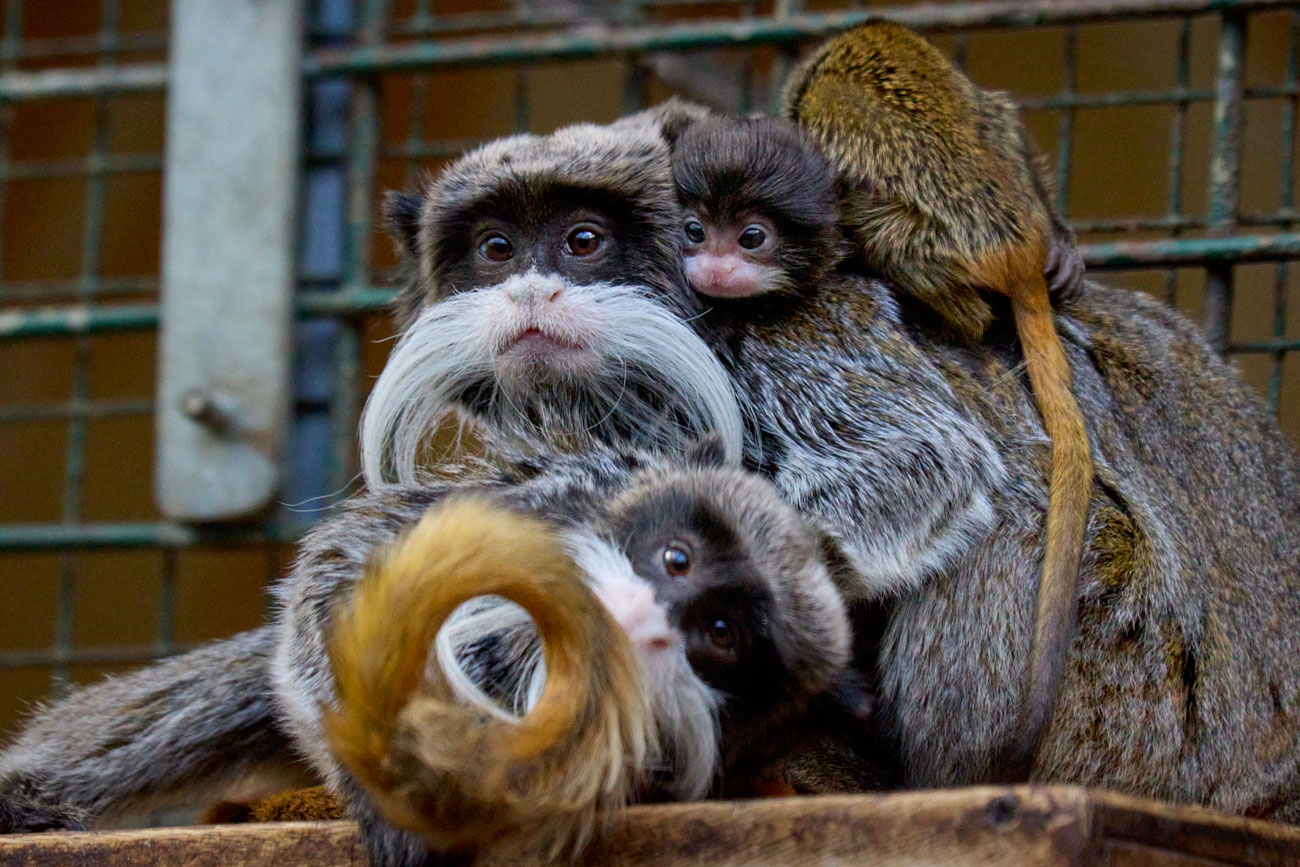
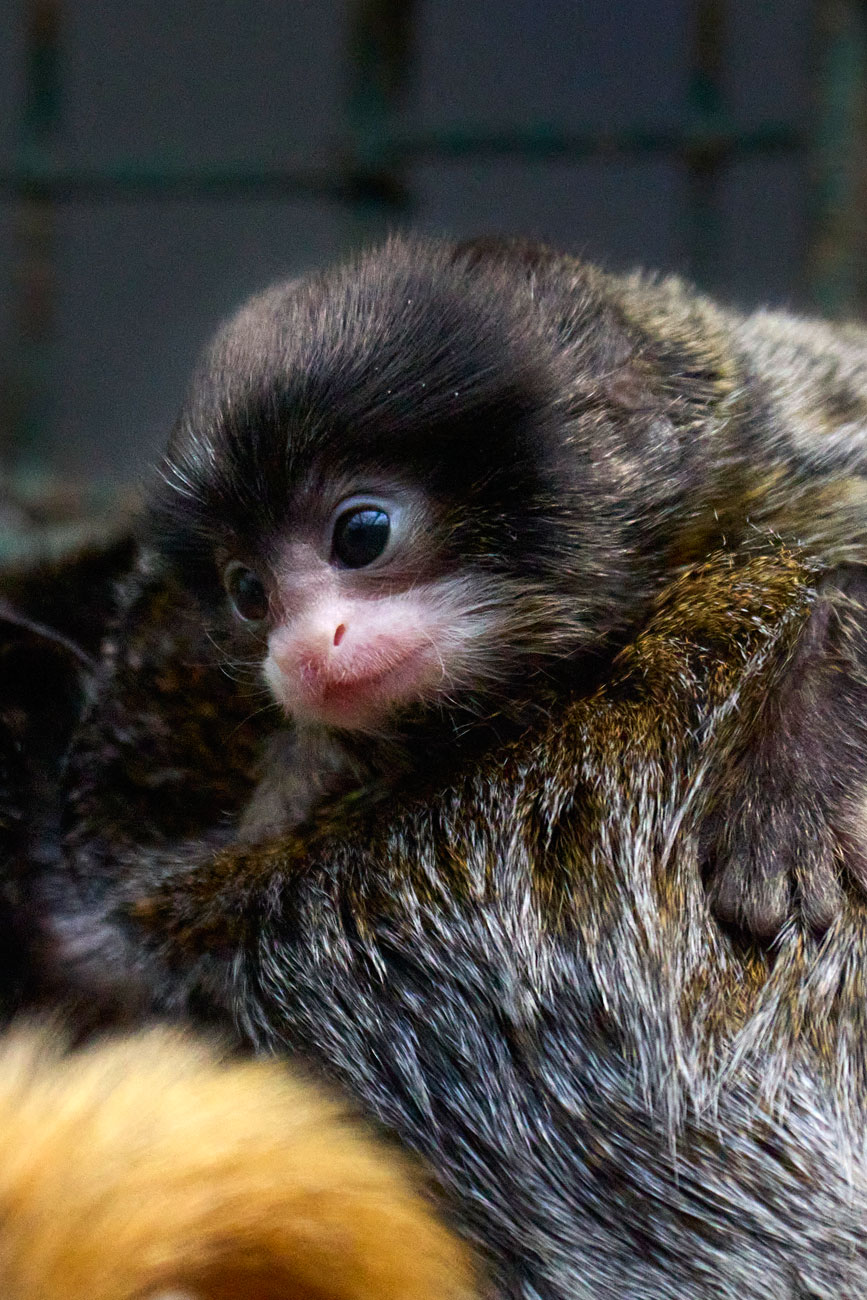
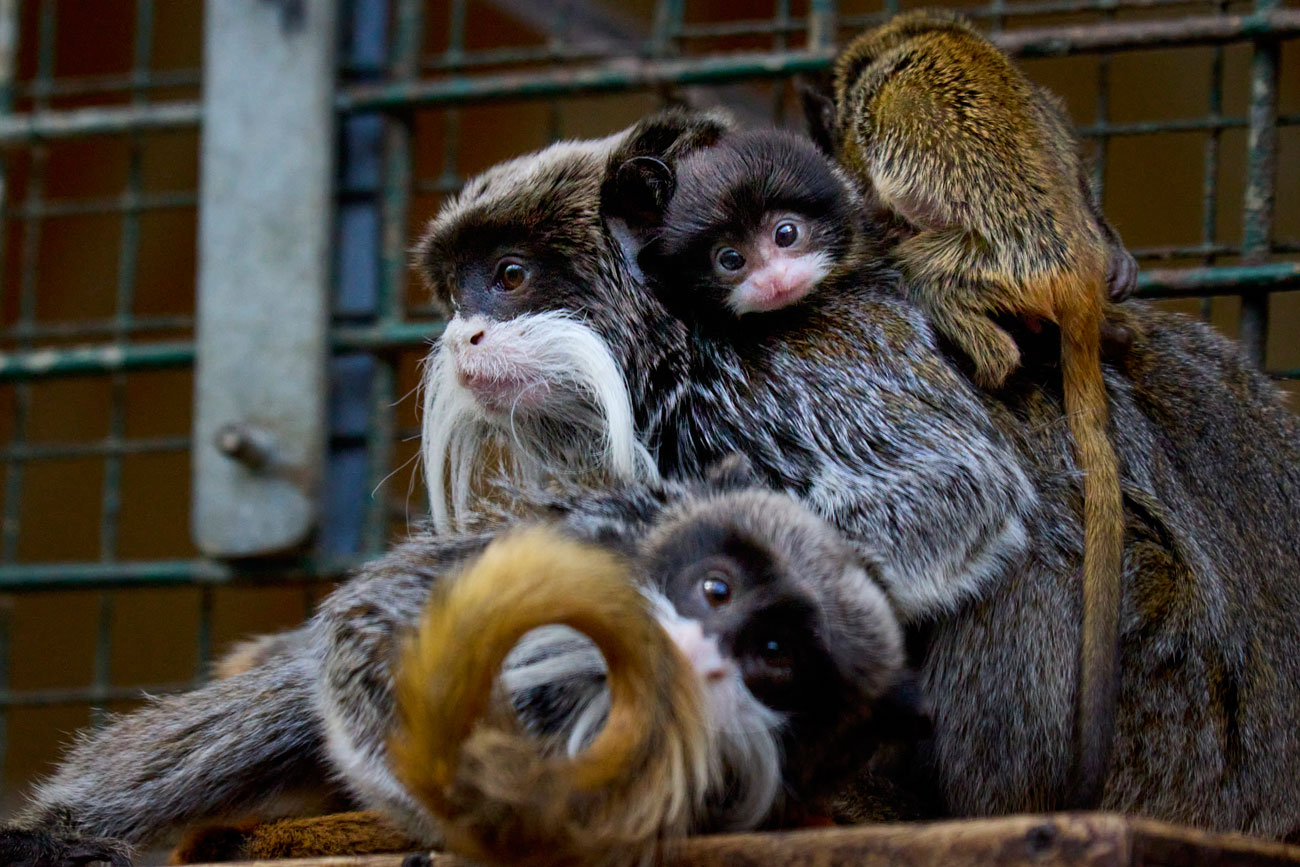
With their elongated curved moustache of each side of the snout, emperor tamarins are among the most spectacular callithricids. They mainly feed on fruits in the wet-season and increase the proportion of nectar in the dry season. They also hunt small animals (insects, snails, frogs).
Although their habitat is increasingly subject to deforestation, the species is not considered as threatened.
